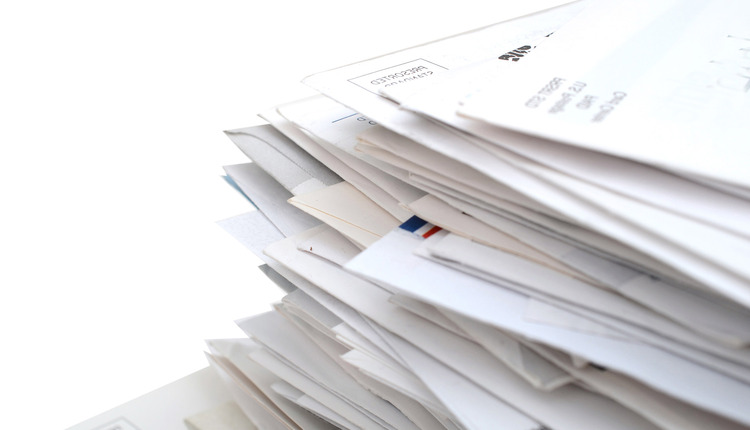Direct mail has long been the workhorse of direct marketing, but in our mobile-centric world, digital marketing channels often take center stage. Choosing the correct marketing channel for your campaign doesn’t have to be an either/or selection, and, in fact, it shouldn’t be.
Integrating direct mail with digital marketing channels can result in a substantial lift in customer response and conversion rates. For example, an insurance company saw a 34% lift in conversion rate when integrating direct mail and digital channels compared to a direct mail-only control. That particular organization also saw a 12% decrease in cost per acquisition and a 26% increase in total conversions.
With both mail and digital as a part of your omnichannel marketing campaigns, you can generate improved response and increase return on marketing investment (ROMI).
What Tools Are Available?
There are many ways to integrate digital channels into your next direct mail campaign. The simplest may be printing a Quick Response (QR) barcode on the mail piece. QR codes are easily scanned with a mobile phone and can take mail piece recipients to a personalized landing page that allows them to learn more about your offer and begin the purchase or application process.
Mail can also be combined with augmented or virtual reality, which can build engagement and involvement with the mail piece by allowing the recipient to connect with your brand or offer through a digital interaction. The retailer IKEA has used augmented reality with great success by allowing recipients of its catalogs to scan an image of a furniture item and see how that item would look in their homes using the camera in their smartphones or tablets.
To reach the same prospects multiple times via various channels, direct mail can be combined with email campaigns or social media (Facebook, Instagram, etc.) messaging. Coordinating campaigns across multiple channels has never been easier. The USPS Informed Visibility platform provides the ability to track mail pieces across the postal processing network, and with GPS-enabled carrier tracking, we can know when our mail pieces reach our recipients’ homes more precisely than ever before. This allows marketers to send an email or post to social media shortly after an offer has been received in the mail. Each of the touches in the different channels reinforces the other touches, adding familiarity and credibility to your message, thereby driving higher response.
Informed Delivery Adds a Mail-Based Option to the Toolbox
A newer option for combining a digital interaction with a physical mail piece is marketing programs linked to the Postal Service’s Informed Delivery program. Informed Delivery is a subscription program offered to postal customers that provides them with a daily email (or app-based view) showing what will be in their mailbox that day. This program leverages black and white images pulled from mail processing equipment during sorting to illustrate the daily mailbox content.
Marketers can take advantage of the Informed Delivery program by creating a campaign linked to this daily feed. An Informed Delivery marketing campaign consists of providing the Postal Service a replacement image (optional and usually in color) to substitute the black and white image pulled from the sorter, a ride-along image with a strong call-to-action, and a destination URL. These elements, along with information about the mailing (including IMb range), will be used by the Postal Service to provide enhanced information about your offer rather than just a scan of the mail piece in the email content.
Why Consider Informed Delivery?
Mailers should consider Informed Delivery as one of the tools to connect a physical direct mail effort to digital channels for several reasons. One is that you will be connecting to a mail-centric audience. The people who subscribe to Informed Delivery have a strong interest in what is arriving in their mailbox and can be expected to view physical mail as credible and respond accordingly — especially with Informed Delivery making the connection to your offer easy and efficient.
Another benefit of Informed Delivery is its ability to attract attention to your offer. Mail pieces with an associated marketing campaign are listed first in the daily email, increasing their visibility to subscribers. In addition, the open rate for the daily email (64.4% in January 2019) is well above industry averages for other types of email campaigns, and the click through rate when the email is opened is consistently above six percent, again well above industry standards.
Through the end of January 2019, there have been 8,517 Informed Delivery campaigns conducted by 1,589 brands. By the end of February, there were more than 15.5 million registered subscribers, representing an average of more than 9.9% of national deliveries across the United States, and subscribers are being added at a rate of more than 166,000 each week.
Oh, and did I mention postage discounts? The Postal Service has a mailing promotion scheduled for September 1 through November 30, targeting use of Informed Delivery. Any mailing with an associated Informed Delivery campaign is eligible for a two percent postage discount on the entire mailing!
Challenges Using Informed Delivery
One consideration to keep in mind when considering Informed Delivery is the fact that only about 10% of your recipients (mailing list) are Informed Delivery subscribers, but that percentage is growing daily.
In addition, the Postal Service is still building out the Informed Delivery platform. True one-to-one campaigns — in which each recipient receives their own personalized message, which would be the ideal for Informed Delivery — are still under development, but now is a good time to test the possibilities of Informed Delivery. If you see good results now, when your campaign is one of few, think how much better the response will be when it is truly one-to-one.
Informed Delivery Best Practices
If you choose to try Informed Delivery as a way of linking your physical mail piece to a digital experience, you’ll need to consider best practices to get the most out of this tool. When considering whether to replace the USPS’ black and white image with a color image of your own, be sure the replacement image has a strong tie to the original mail piece. Many mailers use a color image of the mail piece with the address and postage markings removed, or if they are using a postcard, they use the colorful face of the postcard in place of the address side of the piece. That said, many mailers are seeing success using the black and white image of the mail piece, which provides the recipient with a strong connection with what they’ll see in the mail.
The most effective best practice with Informed Delivery is to ensure your ride-along image includes a strong call-to-action (CTA). Just like most marketing best practices, no matter the channel, the stronger the CTA, the better the response. So be sure tell your recipients what you want them to do: “Click here to get 20% savings,” or whatever your best offer is.
Be sure to test Informed Delivery as an element of your next omnichannel campaign. You may just find it to be a winner.
Kurt Ruppel, Director Postal Policy and Marketing Communications at IWCO Direct, will be co-presenting more information on Informed Delivery on May 5th at the 2019 National Postal Forum. He can be reached at kurt.ruppel@iwco.com.
This article originally appeared in the May/June, 2019 issue of Mailing Systems Technology.
















